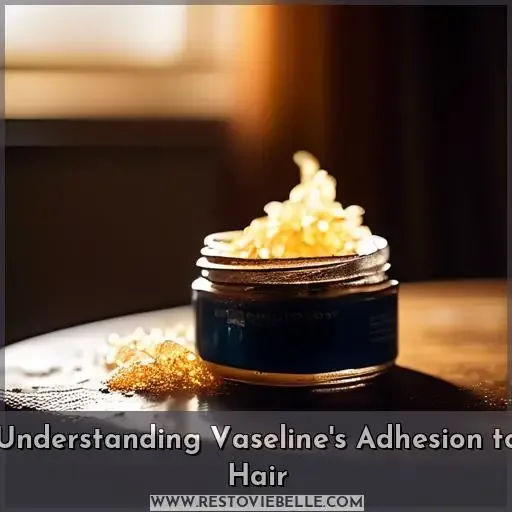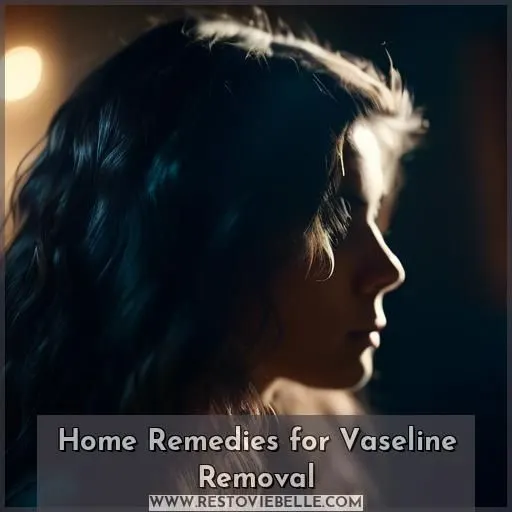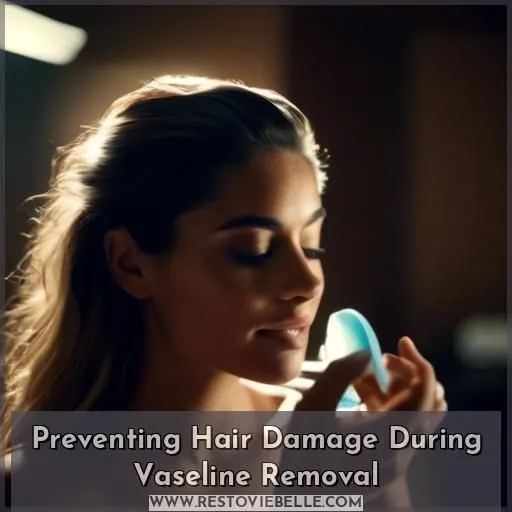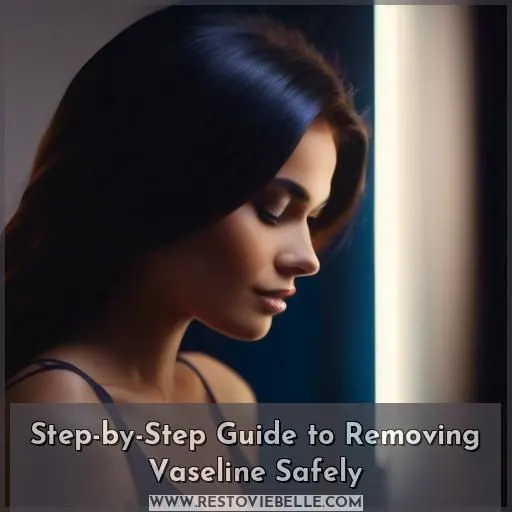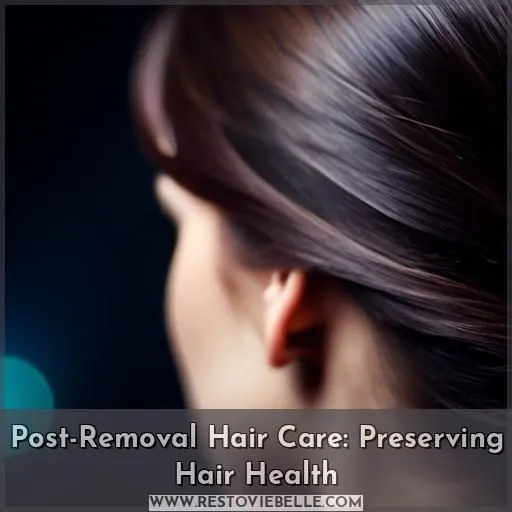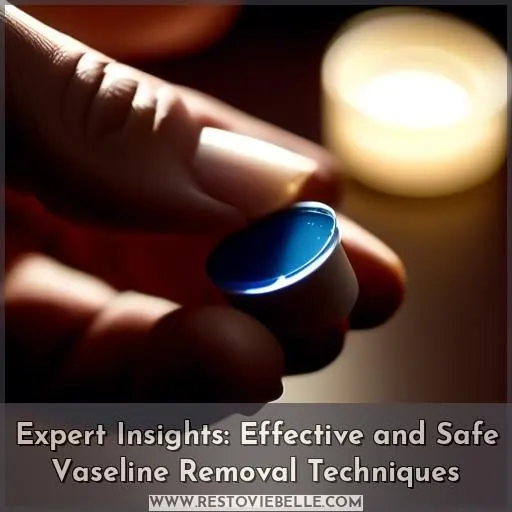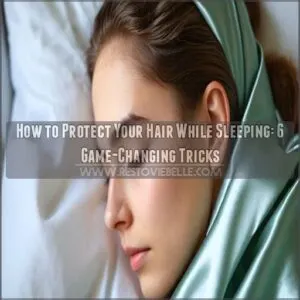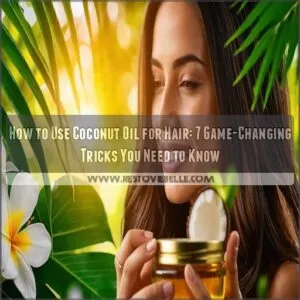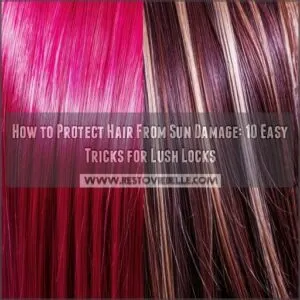This site is supported by our readers. We may earn a commission, at no cost to you, if you purchase through links.
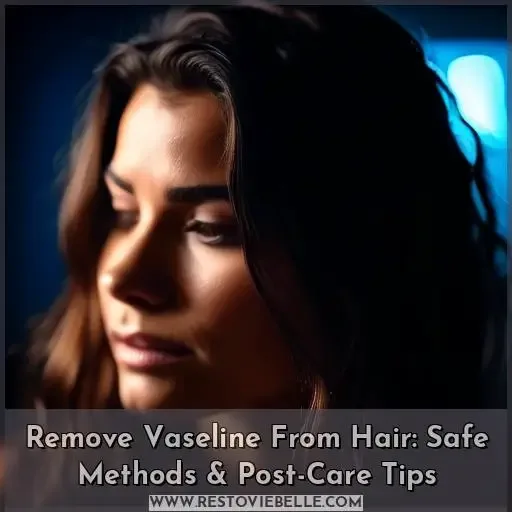 Removing Vaseline from your hair can be a tricky task, but with the right techniques, you can do it safely and effectively. From using household powders to deep-cleansing shampoos, there are several methods to remove the greasy residue and restore your hair’s natural shine and vitality.
Removing Vaseline from your hair can be a tricky task, but with the right techniques, you can do it safely and effectively. From using household powders to deep-cleansing shampoos, there are several methods to remove the greasy residue and restore your hair’s natural shine and vitality.
One effective approach is to use a dry shampoo or baby powder. Apply the powder to the affected areas, let it sit for a few minutes, then brush it out.
Another option is to use a clarifying shampoo. These shampoos are designed to deeply cleanse the hair and remove buildup, including Vaseline. Lather the shampoo thoroughly and rinse it out thoroughly to ensure all the Vaseline is removed.
You can also try using a baking soda paste. Mix a small amount of baking soda with water to create a paste, then apply it to the Vaseline-coated areas. Let it sit for a few minutes before rinsing it out. The baking soda will help break down the Vaseline and remove it from your hair.
If the Vaseline is particularly stubborn, you may need to use a degreasing agent, such as dish soap or laundry detergent. Apply a small amount to the affected areas, lather, and rinse thoroughly. Be cautious, as these products can be drying, so follow up with a deep conditioning treatment.
Regardless of the method you choose, it’s important to be gentle and patient when removing Vaseline from your hair. Avoid excessive scrubbing or harsh techniques, as this can damage your hair and scalp.
With the right approach, you can successfully remove the Vaseline and restore your hair’s healthy, vibrant appearance.
Table Of Contents
- Key Takeaways
- Understanding Vaseline’s Adhesion to Hair
- Home Remedies for Vaseline Removal
- Preventing Hair Damage During Vaseline Removal
- Step-by-Step Guide to Removing Vaseline Safely
- Post-Removal Hair Care: Preserving Hair Health
- Expert Insights: Effective and Safe Vaseline Removal Techniques
- Frequently Asked Questions (FAQs)
- What is the most effective way to remove Vaseline from hair without causing damage?
- Can baking soda or cornstarch be used to remove Vaseline from hair?
- Is it safe to use apple cider vinegar to remove Vaseline from hair?
- How can I prevent hair damage while removing Vaseline?
- What is the best way to condition my hair after removing Vaseline?
- Conclusion
Key Takeaways
- Use a clarifying shampoo to remove Vaseline from your hair.
- Apply dish soap or laundry detergent to affected areas and lather before rinsing thoroughly.
- Avoid using harsh shampoos that can damage hair and opt for a gentle shampoo instead.
- Rinse hair thoroughly after removing Vaseline to avoid leaving residue.
Understanding Vaseline’s Adhesion to Hair
Let’s dive into why Vaseline clings to your hair like a koala to a tree.
Picture this: Vaseline’s oil-based nature means it’s about as fond of water as cats are, making it a tough nut to crack with your regular shampoo. Its greasy texture doesn’t just vanish; it sticks around because its evaporation rate is slower than a snail’s race.
And let’s not forget about hair porosity – some locks soak up Vaseline like a sponge, while others repel it. But fear not! With some gentle techniques and savvy home remedies, you can tackle this sticky situation without turning your hair care routine into a horror story.
Remember, damage prevention is key, so let’s keep things light and avoid turning your tresses into a greasy mess.
Home Remedies for Vaseline Removal
In the realm of hair care, removing Vaseline can be a daunting task. But fear not, for there are home remedies that can help you navigate this complex process.
One method involves using powder absorption. Blot excess Vaseline with paper towels, then coat greasy hair with baking soda, baby powder, or cornstarch. After cleansing your hair with shampoo and warm water, condition it and let it air dry.
Another approach is oil treatment. Apply a small amount of oil to your fingertips and massage it into the Vaseline. Let it sit for 10-15 minutes, then blot the area and wipe out the oil and Vaseline.
For a more unconventional method, try a vinegar soak. Fill a spray bottle with apple cider vinegar and spritz affected areas. Work the vinegar into your hair and wipe in a downward direction until all the Vaseline is gone.
If you’re seeking a more natural approach, consider egg shampoo. Whisk together a couple of eggs and use it as shampoo, focusing on areas with the most product buildup. Follow with your regular wash routine, using a pleasant-scented product to combat the egg smell.
Lastly, don’t forget about preventative measures. Use a clarifying shampoo to remove Vaseline effectively, work the shampoo through wet hair focusing on areas with buildup. Massage thoroughly, rinse, and repeat as needed. Remember, it’s not merely about removing Vaseline; it’s about preserving your hair’s health.
Preventing Hair Damage During Vaseline Removal
After tackling the greasy challenge of Vaseline removal, let’s shift gears to keeping your locks luscious and damage-free.
- Gentle Washing: Treat your hair like fine silk. Harsh scrubbing is a no-go. Opt for soft strokes.
- Patch Testing: Before going full throttle, test your chosen method on a small section. Your scalp will thank you.
- Friction Reduction: Avoid the tug-of-war. Detangle with your fingers or a wide-tooth comb.
- Dilution and Emulsification: Mix oil-based methods with your regular shampoo to break down Vaseline without stripping your hair.
Armed with these expert insights, you’re set to remove Vaseline from hair while keeping it healthy, regardless of hair type.
Step-by-Step Guide to Removing Vaseline Safely
Navigating the complexities of Vaseline removal from hair can be a daunting task, but with the right approach, you can safely and effectively remove buildup while preventing damage to your hair. First, assess your hair health by considering your hair type and the amount of buildup present.
Then, choose a method that suits your needs. For instance, if you’re dealing with a lot of buildup, you might opt for a clarifying shampoo or a natural remedy like apple cider vinegar. If you’re concerned about damage, consider using a gentle approach like the oil removal with oil method.
After removing the Vaseline, it’s crucial to maintain your hair’s health. Post-removal maintenance should include deep conditioning, using natural oils, and avoiding heat styling. Gently detangling your hair and cutting split ends can also help preserve its health.
If you’re unsure about a method or need professional assistance, consider seeking advice from a hair care professional. By following these steps and making routine adjustments, you can ensure your hair removal routine is designed to enhance your hair’s health rather than causing damage.
Post-Removal Hair Care: Preserving Hair Health
As you’ve successfully navigated the complexities of removing Vaseline from your hair, it’s time to focus on nourishing and preserving its health. Post-removal hair care is crucial in maintaining the integrity of your locks. First, consider deep conditioning treatments to replenish lost moisture and nutrients.
Natural oils, such as almond or coconut, can also be used to enhance your hair’s health and luster.
When it comes to split ends, it’s essential to adopt a gentle treatment approach. Avoid heat styling tools and instead opt for air-drying or using a diffuser. Gently detangling your hair with a wide-tooth comb will help prevent breakage and further damage.
In the realm of hair care, it’s not merely about removing Vaseline; it’s about creating a bespoke routine designed to enhance your hair’s overall health. It’s advisable to consult with a professional hairstylist or hairdresser to tailor a routine that suits your hair type and specific needs.
Remember, the world of hair care is ever-evolving, so seek more than just a quick fix.
Expert Insights: Effective and Safe Vaseline Removal Techniques
Expert Insights: Effective and Safe Vaseline Removal Techniques
Removing Vaseline from your hair can be a daunting task, but with the right techniques, you can safely and effectively remove it without causing damage.
-
Clarifying Shampoo: Use a clarifying shampoo to cleanse your hair. This type of shampoo is designed to strip away build-up and impurities, making it an excellent choice for removing Vaseline. Work the shampoo through your hair, focusing on areas with buildup, and rinse thoroughly.
-
Oil-Based Methods: Oil-based methods can be gentle and effective for removing Vaseline from your hair. Apply a small amount of oil to your fingertips and massage it into the Vaseline-coated areas. Let it sit for 10-15 minutes, then blot the area with paper towels and wipe out the oil and Vaseline.
-
Egg Shampoo: Whisk together a couple of eggs and use them as a shampoo. Focus on areas with the most product buildup. Follow with your regular wash routine.
-
Professional Consultation: If you’re unsure about the safety or effectiveness of a removal method, consult a professional. A hairstylist or dermatologist can provide guidance and recommend the best approach for your hair type.
Frequently Asked Questions (FAQs)
What is the most effective way to remove Vaseline from hair without causing damage?
To effectively remove Vaseline from hair without causing damage, gently blot excess Vaseline, apply a clarifying shampoo like DreamGirls Renewing Shampoo, focusing on greasy areas, rinse thoroughly, and follow with a nourishing conditioner for healthy, clean hair.
Can baking soda or cornstarch be used to remove Vaseline from hair?
Yes, baking soda or cornstarch can indeed be your hair’s knight in shining armor against Vaseline’s greasy grip. Just sprinkle, let it sit, and then shampoo away for a clean, Vaseline-free mane.
Is it safe to use apple cider vinegar to remove Vaseline from hair?
Yes, it’s safe to use apple cider vinegar to remove Vaseline from your hair. Apple cider vinegar can help break down the Vaseline, making it easier to remove. To use apple cider vinegar, mix equal parts vinegar and water, and apply it to your hair.
How can I prevent hair damage while removing Vaseline?
To prevent hair damage while removing Vaseline, follow these steps:
- Gentle approach: Be careful not to pull or tug at your hair while removing Vaseline. This can cause breakage and damage.
- Patch test: Before applying any removal method, do a patch test on a small area of your hair to ensure it doesn’t cause irritation or damage.
- Reduce friction: Avoid rubbing your hair vigorously when removing Vaseline. Instead, use gentle, circular motions to minimize friction and damage.
- Dilute or emulsify the product: If possible, dilute or emulsify the Vaseline before removing it. This can make it easier to wash out and reduce the risk of damage.
- Rinse well: Make sure to rinse your hair thoroughly after removing Vaseline to ensure all residue is gone.
By following these steps, you can safely remove Vaseline from your hair without causing significant damage.
What is the best way to condition my hair after removing Vaseline?
Did you know 90% of us use conditioner wrong? After battling Vaseline, treat your locks to a deep conditioning session.
Conclusion
Unleash the power of home remedies to safely remove Vaseline from your hair, preserving its health and shine.
From dry shampoo to baking soda paste, these techniques are meticulously crafted to navigate the complexities of Vaseline removal.
With expert insights and post-care tips, you’ll unlock the secrets to a bespoke, tailored approach to hair care, designed to enhance your locks towards a vibrant, ever-evolving world of beauty.
